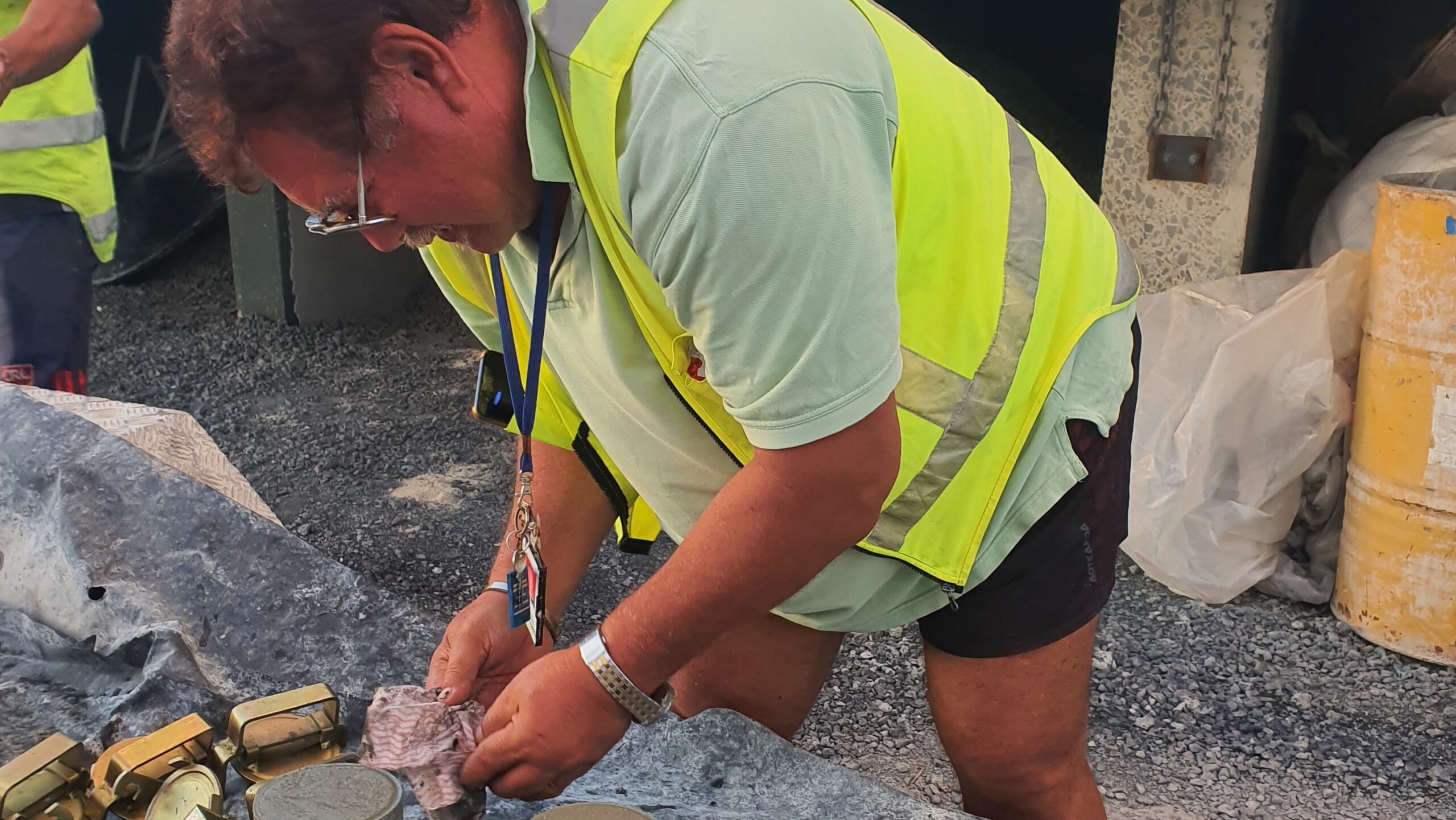Genie in a bottle: The magic of glass
Saturday 19 March 2022 | Written by Te Ipukarea Society | Published in On the Street, Opinion

Ata Herman day 1 of concrete glass strength test programme. Shaping cylinder samples . SUPPLIED/22031824
Sand has become a hot commodity here on Rarotonga and Aitutaki. Yes, for the picture-perfect beach shots, but also for increased interest to build, writes Te Ipukarea Society.
Some of us may have noticed an increase in sand mining activity taking place around the island. Operations such as these typically result in big cash returns for landowners sitting on top of these sandy gold mines.
Removing the sand however from these areas and replacing it with dirt changes the porosity of the area and how it functions during heavy floods. Sand has sponge like qualities and is able to absorb runoff from heavy rains, mitigating the effects of floods.
There are alternative materials that can be used to replace the use of sand, especially for construction. Materials that can be diverted away from our landfill. Glass! Green bottles, beer bottles, wine bottles, a whole lot of glass.
Some builders on Atiu have been making the most of their glass waste. Crushed glass has been used as fill for the inside of concrete blocks as well as making cement for kitchen benches. Apii Enuamanu hardware students have also been introduced to the concept of repurposing crushed glass in concrete mixes through teacher Bob Gore from Cook Islands Tertiary Training Institute. Over the past couple of years, Gore’s young students have since made concrete pathways, a cement base for the school water tanks, and the foundation of their school’s market area using crushed glass within their concrete mix.
To truly investigate the strength of crushed glass in concrete mixes compared to the use of sand, TIS teamed up with the airport ‘slabs’ to run some tests using their concrete strength testing equipment and expertise. Additional advice was provided by engineer Ata Herman. The team designed a 28 day testing process. Sample concrete cylinders were made using:
- The standard sand, cement, aggregate ratio mix used for concrete currently.;
- Same as 1., but replace half the sand with crushed glass.
- Same as 1, but replacing all the sand with crushed glass.Strength tests were then carried out on the cylinder samples 4 days, 7 days, and 28 days after the samples were made.
Final results suggested that the 100% sand was the strongest across all three time period tested. However, the 100% crushed glass mix also tested well, showing it can be used for some types of construction. Curiously the 50% sand/glass mix came out the weakest, but with only one test done on each different mixing ratio, this result is not conclusive. More rigorous testing of different mixes will need to be done.
The study has posed some new ideas moving forward on ways to come up with a magic formula that produces strong concrete with crushed glass. Future studies include, changing the texture of the crushed glass to a more corser product. The crushed glass we used from our landfill is currently very fine, this could have reduced the binding properties. A higher number of replicates of each mixture would also need to be tested, perhaps 10 of each, to provide more statistically valid results.
Despite the results showing there is room for improvement in the testing regime, crushed glass can still be used across a range of different structures. These include a base liner for cemented carparks or as manufactured concrete blocks with normal strength concrete used as infill.
It’s also an economical and sustainable way of reusing a lot of the glass bottle waste we are currently generating up at our landfill, and also a way to reduce sand mining.
A full report of the 28 days crushed glass concrete test is available from the TIS office.




































